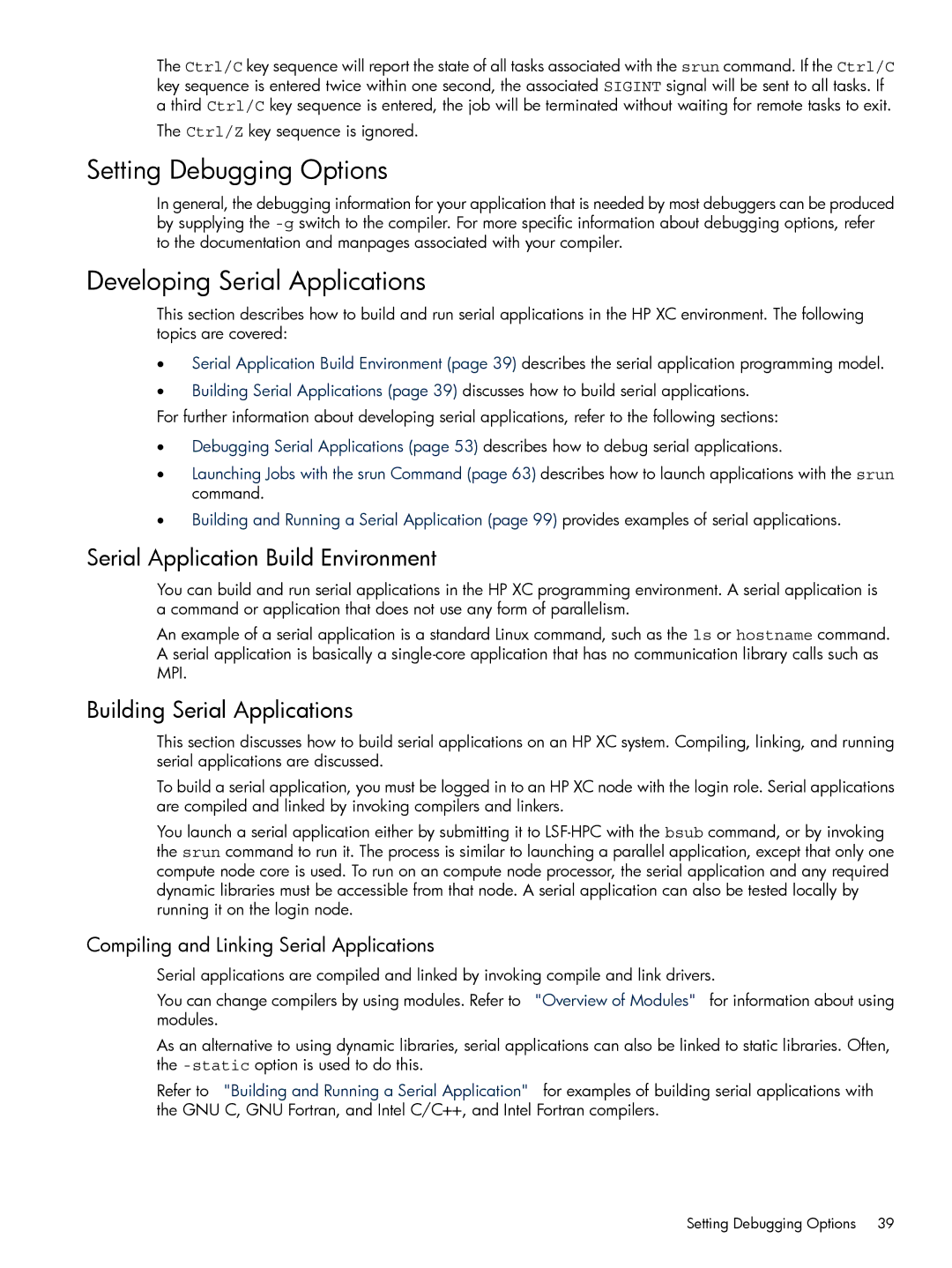The Ctrl/C key sequence will report the state of all tasks associated with the srun command. If the Ctrl/C key sequence is entered twice within one second, the associated SIGINT signal will be sent to all tasks. If a third Ctrl/C key sequence is entered, the job will be terminated without waiting for remote tasks to exit.
The Ctrl/Z key sequence is ignored.
Setting Debugging Options
In general, the debugging information for your application that is needed by most debuggers can be produced by supplying the
Developing Serial Applications
This section describes how to build and run serial applications in the HP XC environment. The following topics are covered:
•Serial Application Build Environment (page 39) describes the serial application programming model.
•Building Serial Applications (page 39) discusses how to build serial applications.
For further information about developing serial applications, refer to the following sections:
•Debugging Serial Applications (page 53) describes how to debug serial applications.
•Launching Jobs with the srun Command (page 63) describes how to launch applications with the srun command.
•Building and Running a Serial Application (page 99) provides examples of serial applications.
Serial Application Build Environment
You can build and run serial applications in the HP XC programming environment. A serial application is a command or application that does not use any form of parallelism.
An example of a serial application is a standard Linux command, such as the ls or hostname command. A serial application is basically a
Building Serial Applications
This section discusses how to build serial applications on an HP XC system. Compiling, linking, and running serial applications are discussed.
To build a serial application, you must be logged in to an HP XC node with the login role. Serial applications are compiled and linked by invoking compilers and linkers.
You launch a serial application either by submitting it to
Compiling and Linking Serial Applications
Serial applications are compiled and linked by invoking compile and link drivers.
You can change compilers by using modules. Refer to "Overview of Modules" for information about using modules.
As an alternative to using dynamic libraries, serial applications can also be linked to static libraries. Often, the
Refer to "Building and Running a Serial Application" for examples of building serial applications with the GNU C, GNU Fortran, and Intel C/C++, and Intel Fortran compilers.
Setting Debugging Options 39
